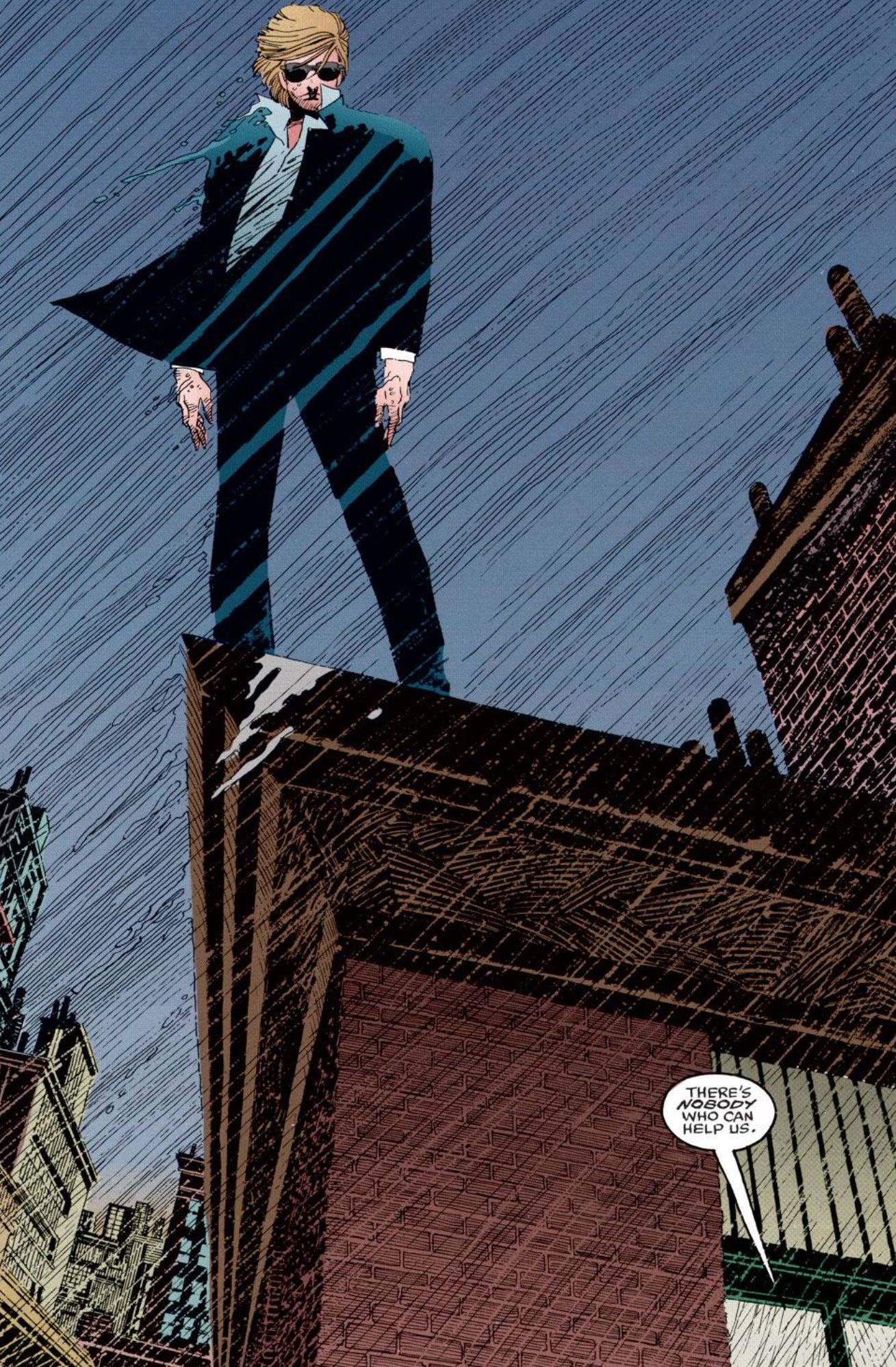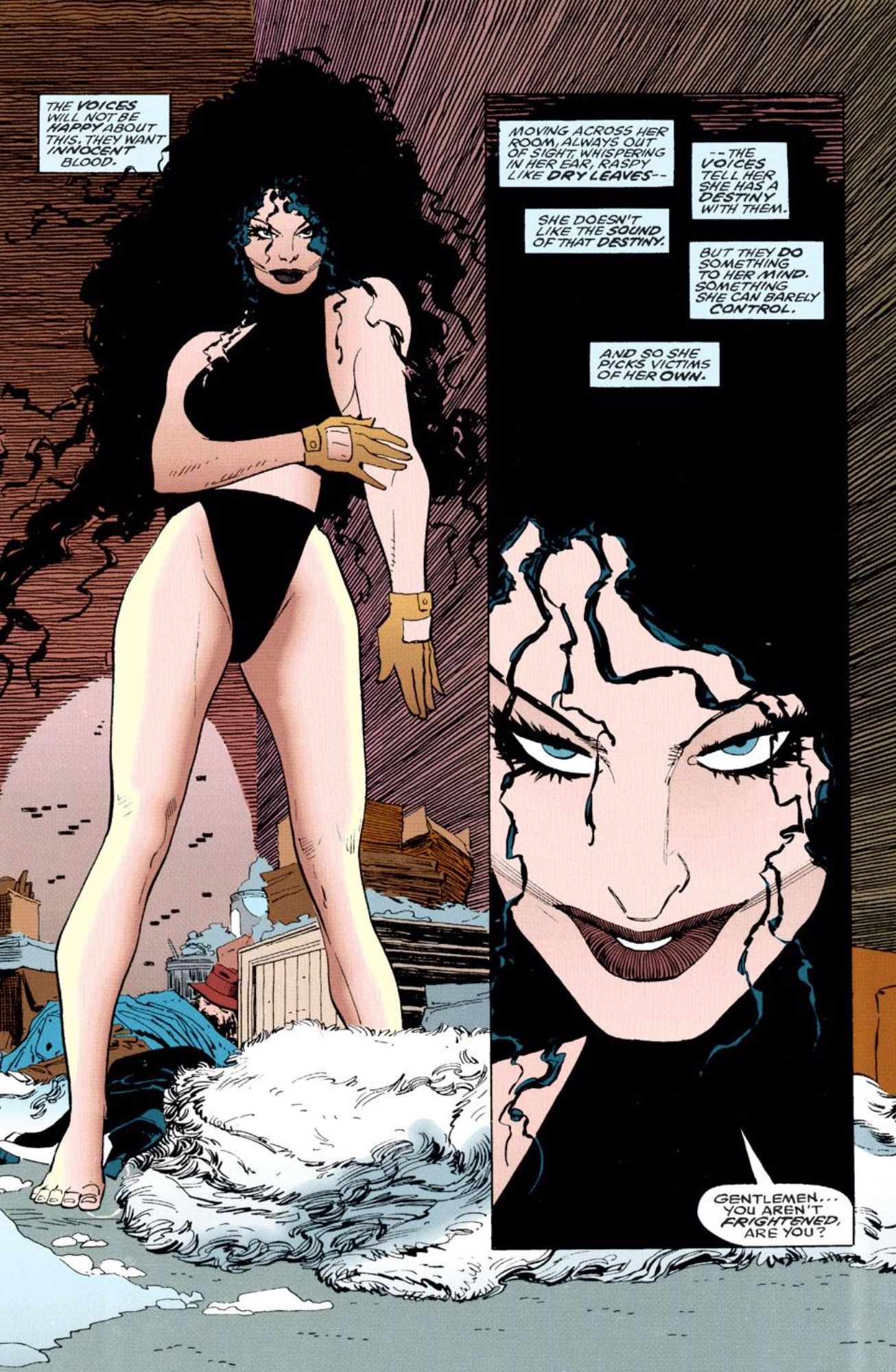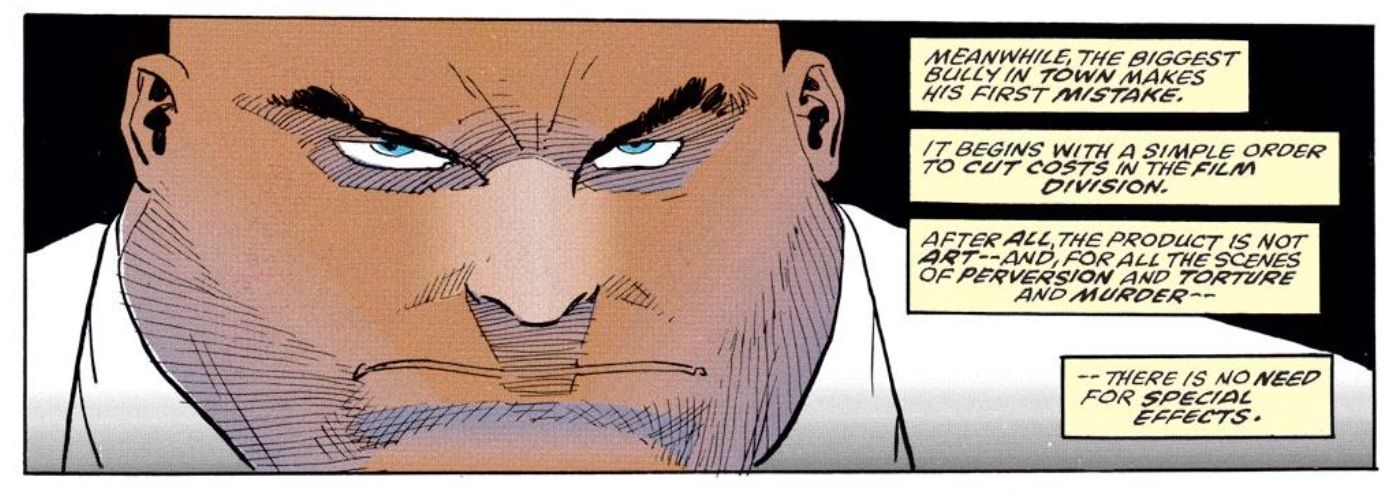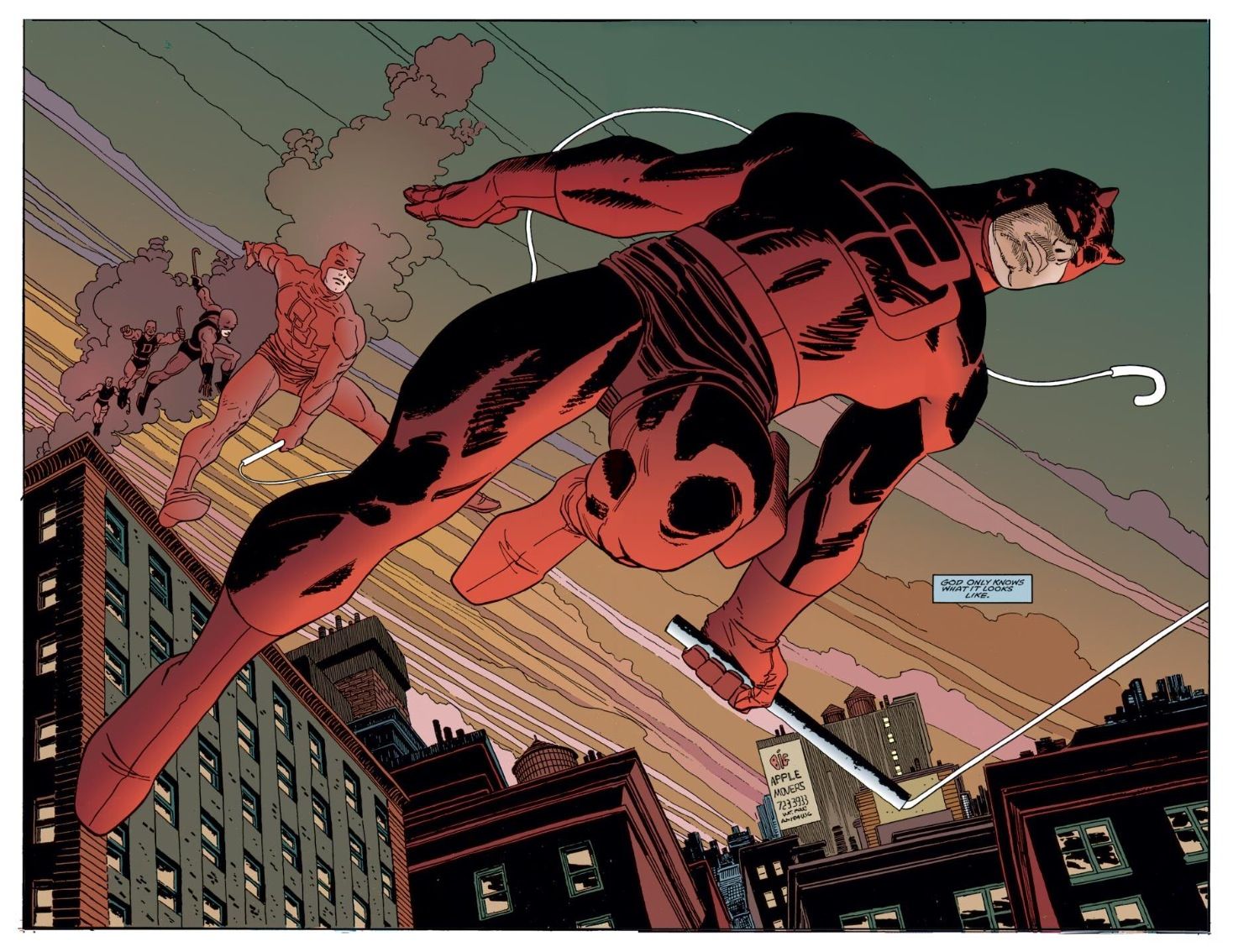In this column, Mark Ginocchio (from Chasing Amazing) takes a look at the gimmick covers from the 1990s and gives his take on whether the comic in question was just a gimmick or whether the comic within the gimmick cover was good. Hence "Gimmick or Good?" Here is an archive of all the comics featured so far. We continue with the red foil covers for Daredevil: The Man Without Fear #1-5...
Daredevil: The Man Without Fear #1-5 (published October 1993 to February 1994) – script by Frank Miller, pencils by John Romita Jr., inks by Al Williamson
In honor of the 50th anniversary of the first appearance of Daredevil this month, Gimmick or Good? will take a look at the five-part miniseries that reimagined ‘Ol Hornhead’s origins. The Man Without Fear marked Frank Miller’s return to the character he revolutionized after a six-year absence. In commemoration of this special event, each issue in the series sported a red foil embossed cover.
But what about inside the comics?
Origin retellings often come with inherent risks, especially when it pertains to reimagining a story as classic as the birth of Daredevil. If the creators don’t provide a fresh or unique take on these stories, the whole endeavor runs the risk of being dismissed as superfluous or non-essential.
Obviously, The Man Without Fear miniseries has a reputation that precedes it, and is almost universally accepted as one of the best Daredevil stories ever written. I’m not about to disagree with the consensus – I think the whole thing is fantastic, from Miller’s beautifully-written script to John Romita Jr.’s inspired and dynamic artwork. The series is so well-composed and filled with wonderfully nuanced scenes, I sometimes forget that this was something that was released during the peak of the comic book “boom” period in the 90s.
What makes Man Without Fear such an effective piece of storytelling, and not some origin rehash designed to make a quick buck, is the way Miller integrates most of Daredevil’s mythology that he first introduced during his famed late 70s/early 80s run into the character’s roots. Elektra, Kingpin and Stick are all here, and none feel out of place or clumsily inserted.
With no disrespect meant to Stan Lee or Bill Everett, who first created the character in 1964, Miller’s inaugural run with Daredevil was so influential and groundbreaking (not to mention critically and commercially successful enough to save the title from near-certain cancellation), the universe he fleshed out deserved to be part of ‘Ol Hornhead’s origin story. The Kingpin was always a much better Daredevil villain than a Spider-Man one (despite first appearing in Amazing Spider-Man #50), while the mysticism of Matt Murdock’s mentor Stick, and his college relationship with Elektra, were a critical part of fleshing out and developing the Daredevil franchise. Man Without Fear is not just a retcon done right, but a retcon that, quite frankly, was necessary.
Miller’s script provides some trademark grit to Matt’s earliest days, especially as it relates to the tragic demise of his father, “Battling Jack” Murdock. Granted, in 1964, Lee and Everett didn’t have the luxury of slowly unveiling the origins of their new characters over the space of multiple 48-page issues. Regardless, the Man Without Fear gives us a higher stakes, more compelling version of events. We are made to understand just how anguished and tortured Jack is at the prospect of having to be the hired goon of the Fixer, and how his stubborn refusal to throw a fight is an indisputable life or death decision. Jack’s resigned “I know you’re there. Get it over with,” as he’s walking out of the gym is a total gut-punch that sells the tragedy of this moment that would go on to influence the path of one of Marvel’s most iconic heroes.
Meanwhile, showing a younger Matt working with Stick and honing his skills after being blinded just makes sense. It provides a logical explanation as to how Matt was able to compensate for his blindness to the point that he was able to assume the mantle of a full-fledged superhero. Otherwise, per the original source material, the birth of Daredevil’s powers feels too random and unbelievable.
For Elektra, Miller and Romita Jr., reimagine the character in ways that both celebrate her, and are indicative of her femme fatale characteristics. Miller’s original introduction of the character in the early 1980s may have over-romanticized her in terms of how she was portrayed by Matt in flashbacks so, in this instance, Miller retcons his own work, by putting a fair bit of emphasis on Elektra’s emotional instability and her physical deadliness, even at a younger age.
But Miller’s most effective sleight of hand is reserved for how he weaves Wilson Fisk, the “Kingpin” of crime into this retconned universe. Miller is careful not to have Daredevil and Kingpin cross paths – as it’s established canon that the two didn’t physically interact for the first time until Daredevil #171 in 1981. Instead, Man Without Fear depicts Kingpin’s rise in the New York City underworld as coinciding with Matt’s path to becoming Daredevil. Fisk assumes a leadership position in the mob after murdering the old boss in cold blood. From there, he sets out to establish a newer, more profitable (and more morally corrupt) world order through the city’s crime syndicate.
Matt first encounters the evils of the Kingpin when Fisk’s men kidnap a 14-year-old girl from the Hell’s Kitchen neighborhood because she is needed for one of his “movies.” After saving the girl, Matt decides to embrace “Daredevil,” and the series ends with a beautiful double-page spread from JRJR showing all of the “Man Without Fear’s” various costumes from over the years (we are spared the gray and red shoulder pad get-up that still hadn’t been introduced at the time this mini was published).
If you’re a Daredevil fan, or even someone who is just familiar with Miller’s various runs on the title (or even if you’re a Miller fan from his other work in the industry), then Man Without Fear warrants a spot in your read pile. It’s a story that will give you a better understanding and appreciation for the character, and is a true celebration of one of Marvel’s greatest creations.
Verdict: Good






